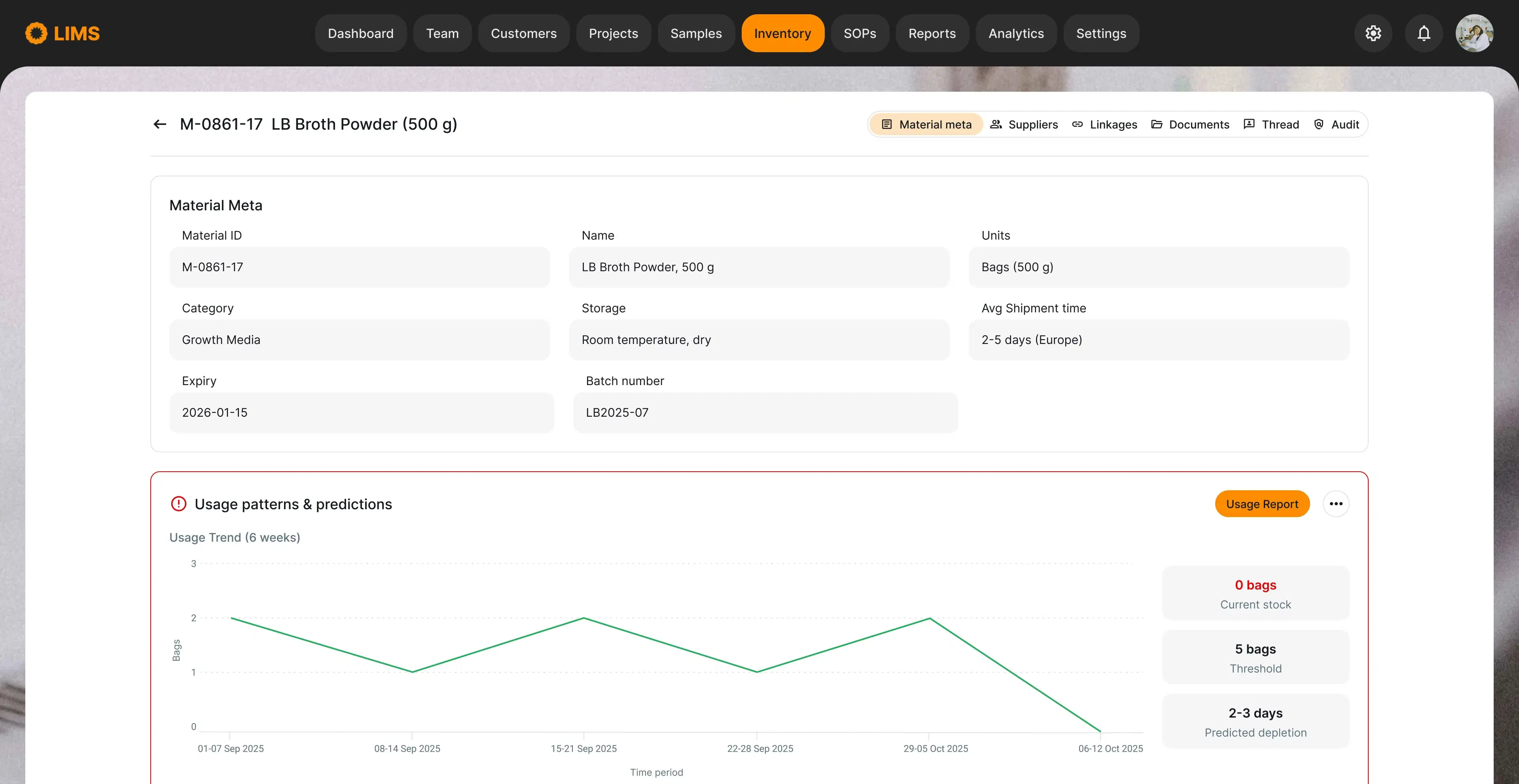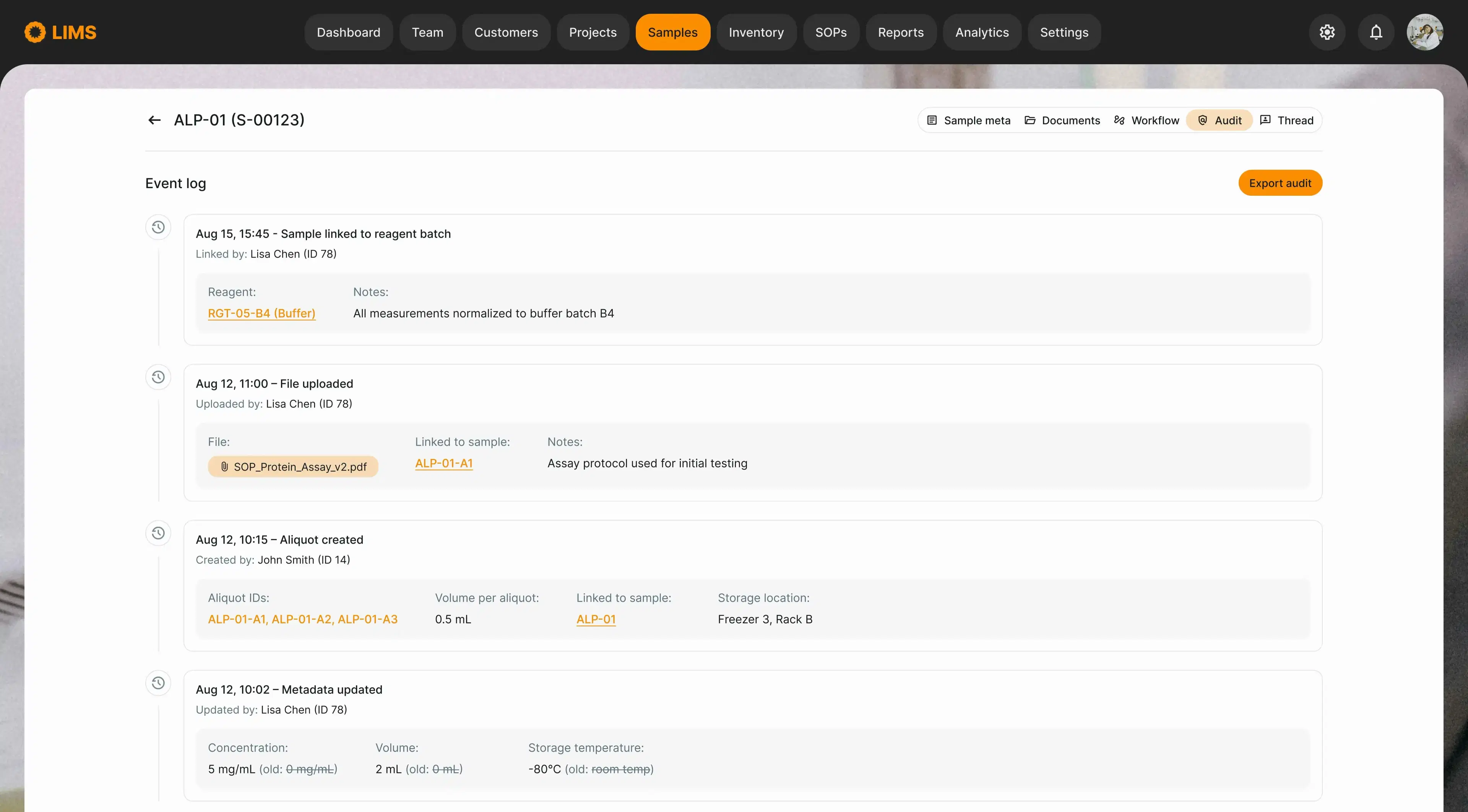Generative Al has quickly become the topic of every biotech conference and industry webinar. From flashy demos of auto-generated experiments to boardroom promises of accelerated discovery, it's clear this technology is creating new excitement. But as with many new waves in biotech software, there's a difference between what's possible in theory and what's truly adding value today.
We dug into the latest articles, pilot studies, and opinions from the past few months to separate hype from practical impact. Here's what we found, plus our view on how biotech teams can smartly integrate these tools into their lab stack.
What Generative Al is Actually Doing in Labs Today
If you scan headlines, it might seem like GenAl is already designing experiments end-to-end. The reality is more grounded but still impressive.
- Automated reporting and compliance summaries
One of the clearest use cases is using GenAl to draft summaries for QC, regulatory submissions, or internal audits. This speeds up documentation and frees up scientists' time. - Data cleaning and anomaly spotting
Several new platforms embed language models or generative transformers to flag outliers in large experimental datasets, or to reorganize messy data into cleaner structures. - Building knowledge graphs for design insights
Some companies leverage GenAl to expand biological or chemical knowledge graphs, which then support smarter experiment planning. These tools help connect the dots across studies in ways that would take humans weeks. - Early-stage LIMS modules for auto-suggesting protocols
A few next-gen lab platforms are experimenting with letting GenAl propose likely next steps in workflows. Though most teams still require heavy manual review.
Why It's Still Not Ready to Pass an FDA Audit
As exciting as these advances are, there's a reason most biotech companies, especially those with GxP environments are cautious.
- Audit trails and traceability
If an Al proposes a protocol or flags a data issue, who is accountable? Most generative systems today lack robust logs that show exactly why the model made its recommendation. - Validation is murky
Unlike traditional scripts or even machine learning classifiers, generative models can vary their outputs run to run. This non-determinism makes them tricky to validate under typical GxP or ISO frameworks. - Compliance standards are still catching up
Regulators are only beginning to draft guidance on large language models in life sciences workflows. Many companies we see prefer to keep GenAl out of critical paths or limit it to generating drafts that humans must explicitly sign off.
Is It Worth the Cost or Just the Latest Hype?
Many labs dream of cutting months off discovery cycles with Al. But in practice, most teams we work with (from startups to enterprise pharma) are taking a measured approach.
Where GenAl adds real value today:
- Drafting documentation that still gets human review.
- Cleaning or tagging large experiment datasets, catching inconsistencies earlier.
- Offering scientists quick overviews of past work, pulling insights from thousands of protocols.
Where it's mostly still just talk:
- Autonomous experiment design that you'd actually trust in a regulatory filing.
- Full replacement of manual data review or QA pipelines.
- Automated regulatory narratives with zero human oversight.
In many of the pilots we've seen, the biggest immediate wins are on time savings for mid-level data tasks but not eliminating expert scientists or compliance officers.
How to Integrate GenAl into Your Lab Stack (Without Losing Control)
There's a strong temptation to chase the "Al platform" promise – plug it in and watch your lab run itself. Reality is more nuanced.
- API-first LIMS or ELN setups are crucialThey let you add GenAl-driven features (like auto-summaries or anomaly suggestions) as small, testable modules without overhauling your entire system.
- Start with non-critical pathsMany biotech companies pilot GenAl on historical datasets or in draft-only reporting. This helps build familiarity and catch quirks before tying outputs to real compliance processes.
- Make sure outputs stay auditableEvery GenAl suggestion or summary needs to be linked back to source data, with clear human sign-off. This traceability is often the biggest hurdle for turning cool demos into something a QA or regulatory team will approve.
Our Take: Where GenAl Really Delivers ROl in 2025
At CodePhusion, we see the biggest returns right now in three places:
- Automated summaries and smart reporting – letting scientist focus on experiments, not format tables.
- Data cleaning and trace flagging – improving data integrity before it hits downstream analytics.
- Small-scale pilots in lab systems – proving out GenAl's usefulness before embedding it deep in a validated pipeline.
Final Thoughts
Generative Al is opening up incredible possibilities for biotech labs. But the winners won't be those who adopt it first, they'll be the ones who implement it with clear traceability, thoughtful validation, and a roadmap that matches their risk profile.
We believe the smartest biotech teams in 2025 are strategically integrating it where it can solves clear problems, building on systems that keep data traceable, and making sure every suggestion remains tied to human judgment.
Curious where GenAl could realistically fit into your lab stack? We're always happy to share examples of pilot projects, audit-friendly integrations, and ideas on how to make generative tools work for your science, not against your compliance.














